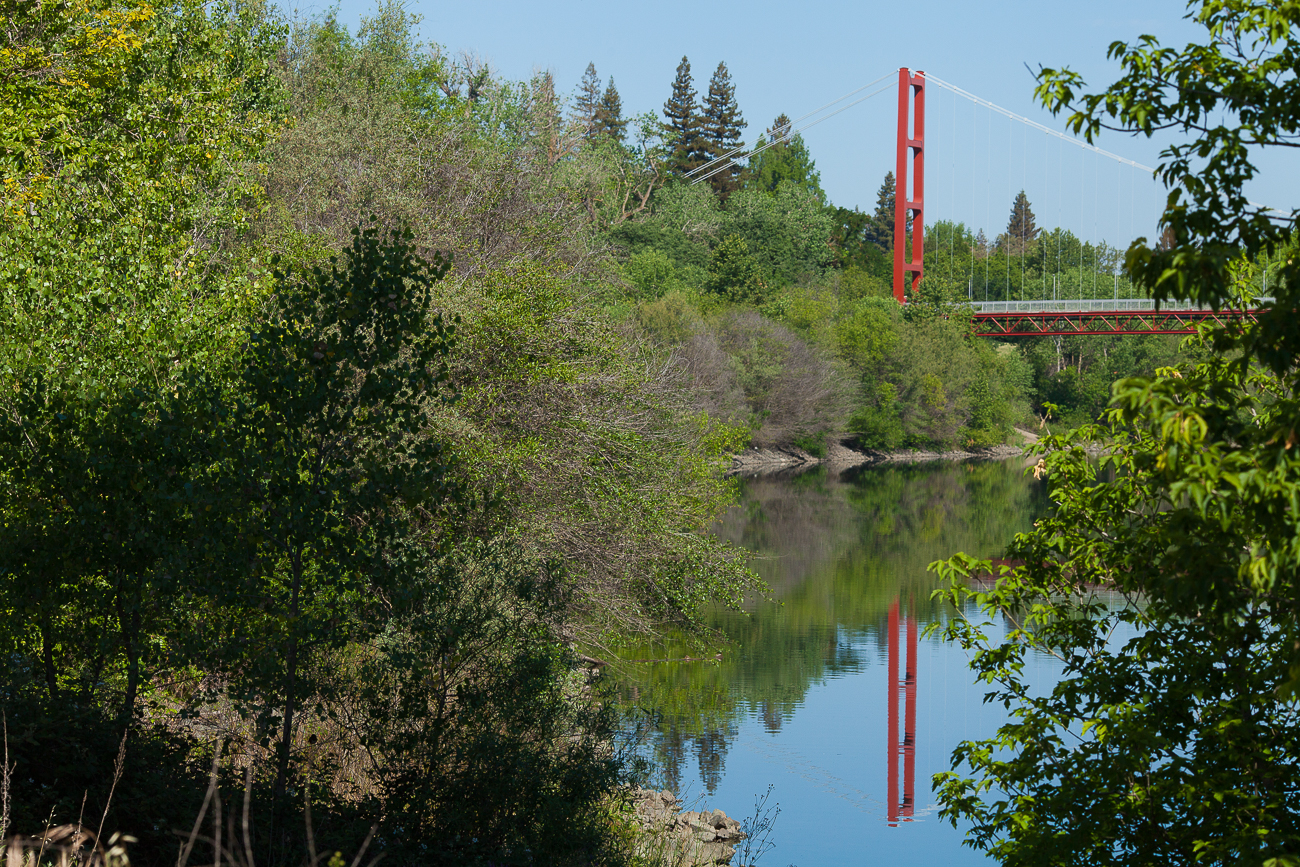 The American River, spanned at Sac State by the Guy West Bridge, will continue to be a research venue in an ongoing project that is expanding based on a new $2.7 million grant to the University. (Sacramento State/Andrea Price)
The American River, spanned at Sac State by the Guy West Bridge, will continue to be a research venue in an ongoing project that is expanding based on a new $2.7 million grant to the University. (Sacramento State/Andrea Price)
By Cynthia Hubert
The American River is a regional treasure, and a beautiful Sacramento State landmark.
But it has been harmed by human activities, and is listed as “impaired” by federal water authorities.
Sac State science students in recent years have actively monitored and studied the river, practicing their research skills and contributing to knowledge and understanding of a precious resource.
Now, thanks to a substantial grant from the National Science Foundation (NSF), the project will be expanded to more Northern California waterways and more disciplines across campus. It also will include students and faculty members from the Los Rios Community College district.
The five-year, $2.7 million grant will fund the second phase of the Sustainable Interdisciplinary Research to Inspire Undergraduate Success (SIRIUS) project.
The project stemmed from a desire by faculty members to give undergraduate students authentic research experience, said Kelly McDonald, a Biology professor and director of Sac State’s Center for Science and Math Success.
Researchers in science, technology, engineering and mathematics, or STEM, are in high and growing demand in the United States and across the globe, McDonald said. “We need many more STEM-trained workers in order for the United States to grow economically and stay competitive,” she said.
For the first phase of the SIRIUS project, which began in 2014, Biology, Chemistry, Geology and Environmental Studies professors redesigned 16 laboratory courses to focus on a common theme: how human activities have affected the American River ecosystem. Some key areas of human impact on river ecosystems include pollution, flow modifications, the introduction of exotic species, and camping and boating.
In the field and inside laboratories, Sac State students identified and studied environmental contaminants and toxins in the river, and their effects on microorganisms and human cell lines.
“The research is relevant to the community overall, but particularly to our students, since the American River runs through our campus,” McDonald said. “They are building skills and addressing an important local problem.”
Prior to SIRIUS, only a small percentage of undergraduate Biology students at Sac State had an opportunity to conduct research, McDonald said. Now, nearly all of them can do so. Adding six disciplines to the project, from Computer Science to Geology to Physics, will allow thousands more students to gain research experience, McDonald said.
“Depending upon their discipline, we want them to do what professionals in the field typically do,” she said. For example, Engineering students could study how dams and levees impact waterways. Math students could develop scientific models and simulation tools.
Evidence suggests that the ability to conduct research as undergraduates inspires more students to pursue STEM careers, said McDonald.
Adding Los Rios to the project will boost the skills of those students, many of whom will transfer to Sac State, said Lisa Hammersley, interim dean of the College of Natural Sciences and Mathematics.
“I am so excited that this grant will now allow the SIRIUS project to grow beyond Sacramento State and be adopted by our community college partners, which will impact even more students in STEM,” Hammersley said.
Linda Zarzana, a Science professor at American River College in the Los Rios district, said she is excited about the Sac State partnership and enthusiastic about giving more students a taste of real-world research.
“It will allow them to think more like scientists,” Zarzana said. “They will be asking themselves, ‘What is the purpose of this research? Who will benefit? Where is the data going?’ It will allow students to become more engaged and really understand what it’s like to be a science person.”
Sac State faculty members will be collaborating with Los Rios faculty in Science to develop project curricula. Ultimately, Zarzana said, data that students gather during SIRIUS II will be shared with the larger scientific community and local and state governments.
The American River is a perfect focus for the project because “it connects all of these institutions,” Zarzana said. “It’s a nice unifying concept.”
Students taking part in SIRIUS II will conduct research on other bodies of water in the area as well, including Folsom Lake and the Cosumnes River.
McDonald said SIRIUS is a novel program for an institution like Sac State, where the primary focus is not on research, but teaching. The project is drawing interest around the country, she said.
“No colleges have done what we have done in terms of linking so many courses across Biology and related science disciplines,” she said. “What’s novel about our program is the scope of it, and the number of students and faculty who are looking at a common theme across an entire curriculum of Biology.”
More than 5,000 students and 38 faculty members participated in the first phase of SIRIUS. With the addition of new disciplines, its impact promises to be even greater, McDonald said.
“Collaboration across many different disciplines the key goal,” she said.
Some courses in the project may have to be adapted because of the impacts of the COVID-19 pandemic, McDonald said. Some students may have to participate in “virtual labs” if they cannot meet face to face, for example. Students may have to use previously gathered data in their research, or collect samples on their own rather than in groups with faculty supervision.
Regardless of the format, the project will continue to be a key to student growth, McDonald said.
“SIRIUS II will take everything we’ve already learned and ramp it up,” she said.
